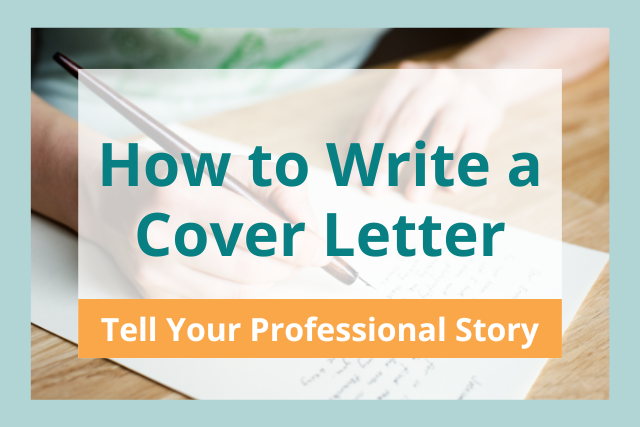
In Part 1 of How to Write Effective, Compelling Cover Letters, we discussed the overall aims and goals of a cover letter.
Now, let's break down the process of writing an actual cover letter as a series of steps to show you how to write a great one.
Cover Letter Working Example
As a working example, we are going to create a cover letter for a hypothetical Marketing Product Manager position at a tech firm called Textual.
I want to write this cover letter in such a way that the company reads it and thinks: “he gets us,” “he is one of us,” and “he will help us.”
To do this, I need to really analyze and understand the company. Here's how to do that:
Step 1: Read and Analyze the Job Description
The central approach in dissecting a job description is to look for one big theme. You can find that by looking for any repeated words or terms in the job description.
Of course, you won't be able to address every single thing stated in the job description in your cover letter; instead, you want to address one big idea or value that really matters to them. So, if you are reading a job description and you find the terms problem-solve, leadership, or innovate over and over, you can infer that these are the core qualities the company are looking for in this specific job.
In our case study of the product manager, the key idea repeated over and over is: solve users' writing problems. This is the big theme of the job description that I will need to address,
Step 2: Read and Analyze the Company
In analyzing the company, you really want to try and understand who the company is through three big questions:
- What do they care about?
- Who do they want to be?
- What kinds of problems do they want to solve?
After you answer those three questions, you are going to distill your findings into one to two key themes.
Where should you look for answers? Everywhere! But more specifically, you want to conduct an exhaustive search in all of these areas:
- Company website
- Company mission statement
- Blogs
- Employee bios
- LinkedIn profiles
- Podcasts
- Press releases about the company
You are looking, as you did in the job description, for repeated words and terms that paint a rich picture of that company.
For the hypothetical example, what I found in the mission statement was that the company really valued writing and language. I heard this appreciation for writing again in an interview with the CEO.
Additionally, I found that the company seemed to care about empowering users; they talked about it on their homepage, on their mission statement, and frequently on social media.
Once you have all this information, it's time to write your cover letter.
How to Write Your Cover Letter, Paragraph by Paragraph
Paragraph 1
In paragraph 1 of your cover letter, you want to capture your reader’s attention with a compelling story using one of the themes you identified; in this case, I chose to tell a story about how words mattered to me.
As you notice in this paragraph, I talk about myself and the company in terms of our shared appreciation for language and writing. The goal of paragraph 1 is to have them finish reading it and think, “This person is a dynamic communicator and is one of us.”
I was seventeen when my English teacher Mrs. Stevens wrote on one of my essays: "Words matter." At the time I sort of got what she meant, but I didn't understand the full force of that phrase until I began to teach writing 15 years later to first-generation college students at a small college in east Lost Angeles. Words, and the ability to make them work, meant everything for my students' futures. It is this lifelong passion for words, and helping people use them in powerful ways, that I believe would make me an excellent product manager at Textual.
Paragraph 2
The purpose of paragraph 2 is to prove to the company that you are a great fit for the job.
So here, I am going to tell a story around the theme that I identified earlier in analyzing the job description: solve users' writing problems. In this story, I need to prove to Textual that I have already done what the job will require of me, and that I’ve done it in my own unique and effective way.
While there are many reasons I believe I'd contribute in dynamic ways as product manager at Textual, I think my experience with writing instruction is particularly critical. Working with colleagues to solve writers' problems is a key aspect of the position, and that is precisely what I did as the assistant director of the writing center. One of the most difficult challenges was developing a strategy for identifying the big challenges our 2,000 student writers faced; together with my colleagues, we conducted focus groups, distributed surveys, analyzed the data, and ultimately identified 10 writing challenges that all incoming students faced. We then educated our writing tutors on these challenges and saw a significant increase in student satisfaction in the writing center.
Paragraph 3
In Paragraph 3, the aim is to show the company that you really understand who they are and what they care about. You want to show that you also care about the same things. So in this third paragraph, I tell a story around how I, like Textual, believe that empowering people is important, which is the third theme that I identified in researching and analyzing the company.
Clearly, though, Textual isn't interested in merely solving writers' problems – an additional, critical goal is to empower writers by helping them grow and learn about writing. My own teaching philosophy shares this same belief in empowering writers. One specific way I tried to cultivate this empowerment was by building into the course small situations where students could 'see' their progress. I'd use surveys and their own texts to point out how their thinking about writing had changed, and how their texts revealed more sophistication. I'd try to have a light touch in these situations and hope that students saw their growth for themselves.
Paragraph 4
The last paragraph should attempt to prove to the company that you’re aware of the importance of the job and also circle back to the theme that you introduced in the first paragraph.
In my final paragraph, I offer my own interpretation of what the job’s larger meaning is for Textual and then come back to my anecdote from the first paragraph. Linking ideas between the last paragraph and the first paragraph is a way of creating a coherent reading experience for the organization and reminding them that you share their values. Most people’s memory is poor, so repeating this large theme is helpful in making sure your reader remembers you.
Textual has a clear vision for how AI and machine learning can enhance what we can do and who we can become as writers. And yet, regardless of how advanced our technology becomes, I believe a key, human-centric principle that should inform this work is what Mrs. Stevens knew long ago: "words matter." The product manager role will be critical in making Textual’s vision for words and writers come to life, and I think my acute understanding of writers and their challenges would make me uniquely valuable in the role. I appreciate your consideration and hope to meet with you soon.
4 Big Things to Consider in Writing a Cover Letter

1: Less is (so much) more (300 words or so)
Many people feel that they need to write a long and comprehensive cover letter, but the truth is you are likely to be far more effective if you keep it shorter and more direct.
Hiring managers are busy and it’s likely they don’t have time to read long cover letters. More importantly, writing a direct and concise cover letter means you have refined your ideas and will therefore come across as a better thinker and communicator.
2: Keep it simple
We are often overwhelmed when we write a cover letter because we don’t even know where to begin. We want to say lots of things. But the truth is you don’t need to say lots of things – you just need to tell three powerful stories that will resonate with the company.
These stories don’t need to be profound, or prove that you are the perfect employee – rather, they just need to give the company some sense of who you are, what you’ve done, and what you care about.
3: Write like a human
When we write a cover letter, we often presume that we need to sound “professional.” This often means that the tone and style of the cover letter feels impersonal and cold. As I said in Part 1, you should write as you speak, and try to make the reader feel like they are having a conversation with you.
The less they have to work to understand your writing, the more likely they are to remember what you say in the cover letter.
Writing clearly is harder than it looks. If you feel you need a little help, why not try ProWritingAid's editing tool? It will give you a readability score, suggest synonyms for overly-complex words, and will help you make changes that will make your writing style clearer. It’ll also make sure you’ve not left any glaring grammatical errors in your cover letter that will get it put straight on the “no” pile.
4: Be different by being you
It's likely that the job you are going for is competitive and the company will receive a significant number of resumes and cover letters. This is why it's so key to really be yourself; to do this, write like you speak and tell authentic stories of what you have done and be honest about your quirks and uniqueness.
Imagine the cover letter is a substitute for getting to meet you in person. Ask yourself: what kind of impression can I create and how can I stand out?
Final Thoughts
Writing a cover letter can be intimidating: how can you possibly convey your experience, background, and interest in a company all in a few paragraphs?
By following the steps outlined in this blog series, you can work out how to tell a story about yourself in a way that demonstrates why you would be a good fit for the company you're applying to. You can identify what the company really want from you, and what parts of your experience will really make you shine.
Good luck!


